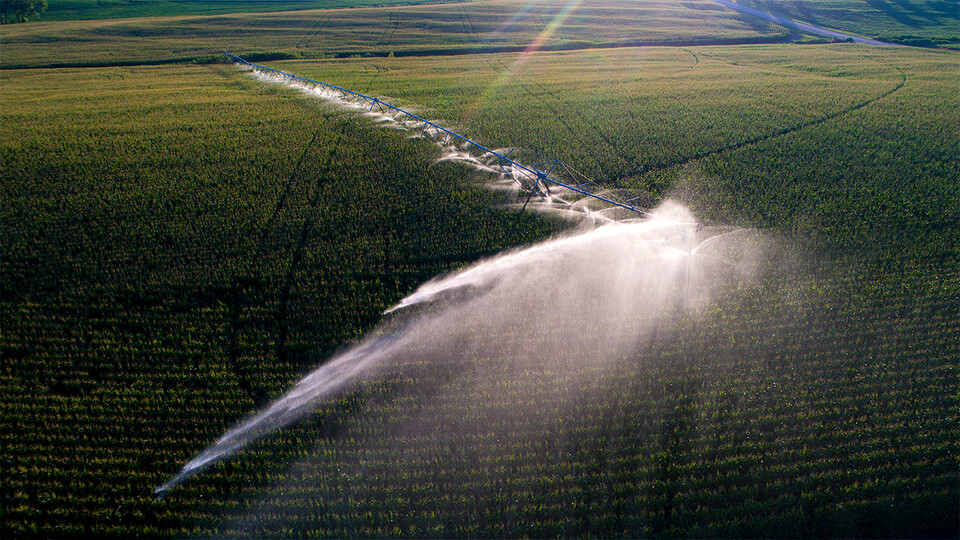
by Scott Schrage | University Communication and Marketing
Sandwiched between the Earth’s topsoil and the underground reservoirs of freshwater known as aquifers, the vadose zone consists of soil and rock interspersed with pockets of water and air. But that zone can also act as a reservoir for arsenic, uranium and other so-called geogenic contaminants that naturally result from geologic processes. The overapplication of nitrogen-based fertilizers on the surface, meanwhile, can result in nitrate and ammonium leaching into the vadose zone, where they may interact with that arsenic and uranium.
As a geologic throughway to the groundwater that serves as drinking water for roughly 80% of Nebraskans and more than one-third of Americans, the vadose zone has drawn increasing attention from researchers. The Nebraska Water Center and SNR's Arindam Malakar and Daniel Snow recently led a study of how irrigation and fertilizer application may contribute to nitrate leaching, which in turn can trigger chemical reactions that potentially mobilize arsenic and uranium. Collectively, those processes are likely contributing to the decline of water quality among some private and public drinking water sources in the Cornhusker State.
The team, which included Nebraska Water Center Director Chittaranjan Ray and SNR graduate students Craig Adams and Jordan Shields, analyzed 32 cores of sediment extracted from the vadose zone around Hastings, Nebraska. Some producers in the region rely on what’s known as gravity or furrow irrigation, which can lead to substantial losses of water and leaching of nitrate while irrigating. Others have turned to pivot irrigation, a more efficient sprinkler-based technique that uses up to 70% less water. Regardless of the irrigation type, the Husker study found that concentrations of both nitrate and ammonium in the vadose zone had generally increased over a five-year span. Nitrate concentrations rated higher in areas watered by gravity irrigation, whereas ammonium exceeded nitrate in areas irrigated with pivot systems.
Iron-rich sediments within the vadose zone generally housed more naturally occurring arsenic, the team found, though levels of the element were similar across gravity- and pivot-irrigated areas, suggesting that the contaminant was relatively immobile. Concentrations of uranium, by contrast, registered roughly eight times lower in areas irrigated by gravity rather than pivot systems, with those uranium levels also tending to decrease in the presence of nitrate.
The latter findings reinforce prior research, led by Nebraska’s Karrie Weber, in indicating that excess nitrogen fertilizer — and leaching of nitrate into the vadose zone — corresponds with the presence of more uranium in the groundwater below. In this case, the researchers said, the larger amounts of water lost via gravity irrigation might be facilitating that uranium flush. While questions remain, the study broadly suggests that transitioning to pivot irrigation could help slow uranium’s migration to groundwater — and mitigate its presence in drinking water.
More details at: https://www.sciencedirect.com/science/article/pii/S0048969723039220